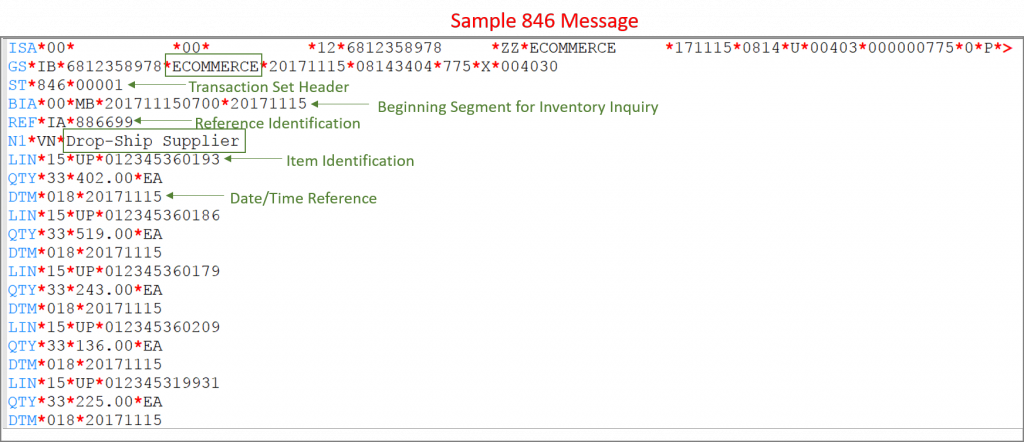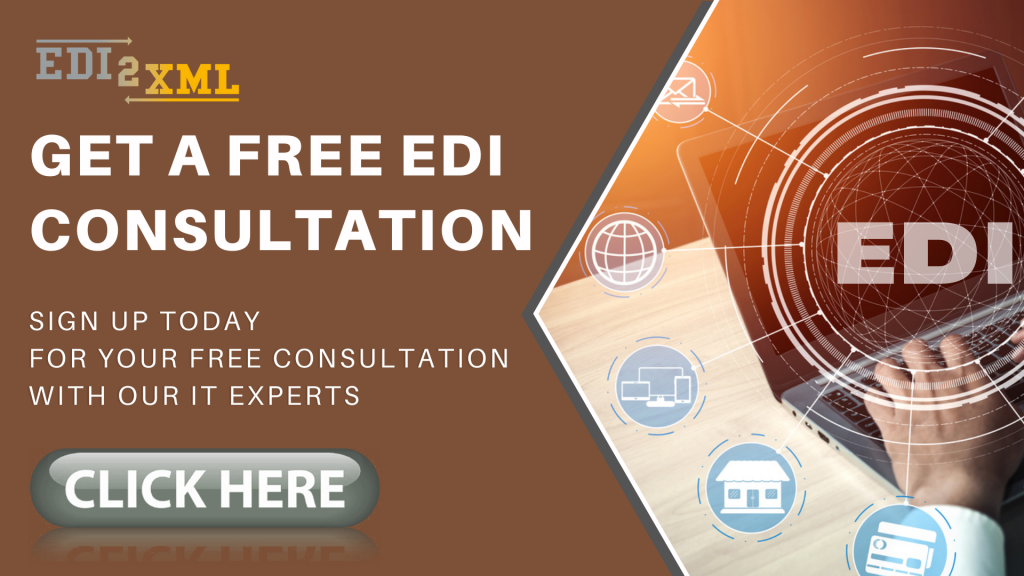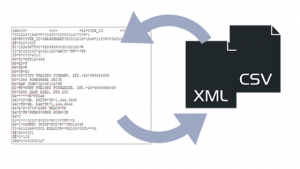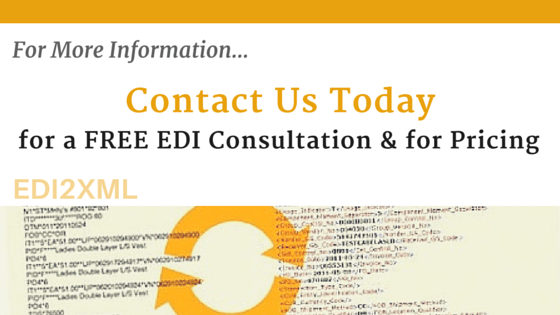This post was updated to reflect current trends and information.
What is EDI 846 Document?
One of the most important electronic EDI documents heavily exchanged between trading partners is the 846 X12 document. It is important mainly due to the evolution of the drop-shipping business that saw a great advancement in the last few years, because of eCommerce and online sales.
The EDI 846 document, also known as the Inventory Inquiry/Advice transaction set, is used in Electronic Data Interchange (EDI) to provide inventory information between trading partners in the context of e-commerce. This transaction set is commonly employed in the retail industry to facilitate the exchange of inventory details.

This EDI document originates from the paper-based “inventory inquiry and advice”. Basically, it is a notification sent by the manufacturer to the seller, advising about stock status and availability. It can also include pricing information. In other words, this EDI message is to exchange information about stock levels and the availability of goods.
For e-commerce, it is very important to have up-to-date information about the availability of goods. That is why one of the major EDI requirements for Amazon, is the capability of the supplier to transmit an EDI 846 Inventory Inquiry message. This is not only a requirement for Amazon exclusively; Other leading retailers such as Cabela’s, Wal-Mart, Costco … all have the same EDI requirement, to be able to feed their e-commerce platform with quality inventory status information.
The EDI 846 document can be sent to business partners, as many times as necessary. It can be 2-3 times a week, up to several times a day; each retailer has his own requirements. EDI 846 Inventory Inquiry/Advice permits suppliers to provide trading partners with information about their products without forcing them to make a purchase. In addition, the EDI 846 transaction is often used to notify business partners about the availability of goods at discounted prices.
EDI 846 Inventory Inquiry and Advice Usage
The other obvious question about 846: who uses this EDI 846 message other than Amazon and the major eCommerce retailers?
The truth is that not only eCommerce retailers can use this EDI transaction and exchange 846 documents. All trading partners can agree to use it to exchange inventory availability and stock level. Some examples:
- sellers to provide inventory information to a potential customer
- seller’s representatives to supply the seller with inventory information
- one seller’s location to give another location inventory information
- seller to demand the availability of inventory
Diverse Applications of the EDI 846 Transaction Set in Varied Industries and Business Scenarios
The EDI 846 Inventory Inquiry/Advice transaction, has varied usage across different industries and business scenarios. Its primary purpose is to provide detailed information about the current inventory levels of a product at a specific location, typically a warehouse or distribution center. This information is crucial for effective supply chain management and helps trading partners optimize their inventory levels and order fulfillment processes.
Here are some of the varied uses of EDI 846:
- Inventory Replenishment: Retailers and suppliers use the EDI 846 to communicate current inventory levels and forecast demand. This helps in making timely decisions regarding inventory replenishment and avoiding stockouts.
- Order Planning: The information exchanged through EDI 846 aids in order planning by providing insights into product availability. Retailers can adjust their order quantities based on the actual inventory levels at the supplier’s end.
- Demand Forecasting: By analyzing historical inventory data provided through EDI 846, businesses can better forecast future demand for products. This can lead to more accurate production and procurement planning.
- Vendor-Managed Inventory (VMI): In VMI arrangements, suppliers use EDI 846 to monitor and manage the inventory levels at their customers’ locations. This collaborative approach helps in maintaining optimal stock levels and reducing carrying costs.
- Supply Chain Optimization: The use of EDI 846 contributes to overall supply chain optimization by enhancing communication and collaboration between trading partners. It streamlines the flow of information related to inventory, reducing manual processes and improving efficiency.
- E-commerce Integration: In the context of e-commerce, EDI 846 plays a role in updating online product availability and supporting real-time inventory visibility for customers. This is important for online retailers and marketplaces to provide accurate information to customers about product availability.
Overall, the varied usage of EDI 846 reflects its importance in facilitating efficient inventory management, enhancing collaboration between trading partners, and improving the overall supply chain performance.
What Information Does the EDI 846 Document Transmit?
In the EDI 846 transmission, inventory location identification, item, and part description, and quantity are the basic information included in almost any EDI 846 document; however, additional information can be added such as:
- Quantity forecasted
- Quantity sold already
- Quantity available in stock
- Pricing information

With EDI 846 online stores optimize their deliveries. They do not need to enter data manually into their internal systems, such as ERP or back-office of their stores. It gives an accurate information to online shoppers about the availability of stock, in a real-time mode. Moreover, it does reduce the administration fees and expenses to process orders and items bought by consumers, while having no stock.
What are the Benefits of Using the EDI X12 846 Inventory Inquiry/Advice?
The EDI X12 846 Inventory Inquiry/Advice transaction set provides several benefits for businesses that use it. Here are some of the key benefits:
1. Improved inventory management: The 846 transaction set provides real-time updates on inventory levels and enables businesses to quickly identify inventory shortages or excesses. This helps businesses to optimize their inventory levels, reduce carrying costs, and avoid stockouts.
2. Increased efficiency: The use of EDI eliminates the need for manual data entry and reduces the risk of errors. This can result in faster order processing times, reduced labor costs, and improved accuracy.
3. Enhanced collaboration: The 846 transaction set allows for seamless communication between trading partners and provides a standardized format for inventory information. This makes it easier for businesses to collaborate with their partners and share inventory data consistently and efficiently.
4. Better decision-making: By having access to real-time inventory data, businesses can make better decisions about when to reorder products, how much to order, and where to allocate inventory. This can help businesses to reduce inventory holding costs, improve customer satisfaction, and increase profitability.
5. Competitive advantage: By using the 846 transaction set, businesses can differentiate themselves from their competitors by offering faster, more accurate inventory information to their customers. This can help businesses to attract and retain customers, increase customer loyalty, and gain a competitive edge in the marketplace.
For more information about how edi2xml fully managed services or web service can help you set up your EDI 846 Inventory Inquiry/Advice with your trading partners, please contact us.






